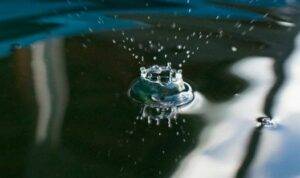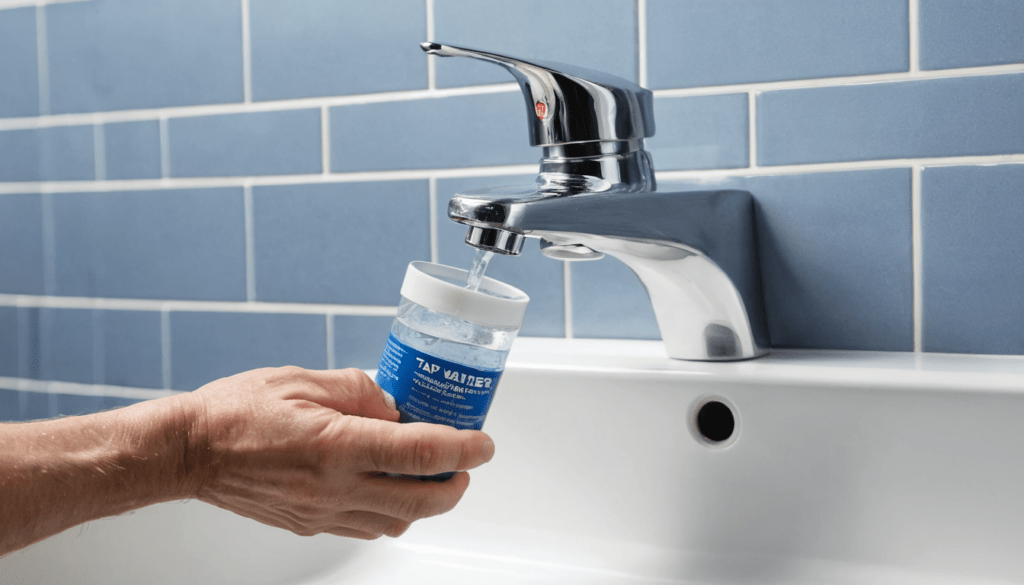When the levels of Ammonia present in water are at high levels, the aquatic organisms are unable to excrete the toxicant that has accumulated in internal tissues and blood. This toxic effect on aquatic life is one justification for removing Ammonia from water.
In this article, we’ll discuss how to remove ammonia from tap water, the effects of excess Ammonia in water, how to test the presence of Ammonia in water, and the main processes of removing Ammonia from tap water.
In most countries and the United States, in particular, the major source of Tap water is lakes, rivers, and wells. One property of Ammonia is that it’s a highly soluble, colorless, pungent gaseous compound of hydrogen and nitrogen (NH3). Ammonia could dissolve in water that flows in ground and surface waters.
Ammonia could come from the biological degradation of nitrogenous organic compounds, excreta of animals, aquatic life, or discharge of industrial waste processes. In underground reservoirs, however, the level of ammonia is limited due to the presence of bacteria which convert the ammonia present into nitrates. Therefore it’s rare to find ammonia to a high degree.
Did you know that Ammonia is amongst the most produced chemical compounds in the world? Ammonia is used in manufacturing many fertilizers and household cleaning products.
How to remove ammonia from drinking water – Drinking Water Quality

Chemically Ammonia is not dangerous to humans; however, According to USEPA, when high levels of Ammonia exceed the average level of 0.1 mg/L. dissolves in water it makes the water poisonous. It’s a sign of contamination. We will look at signs of ammonia contamination.
1. How Might The Exposure Of Ammonia In Tap Water Affect Your Health?

According to the World Health Organization, the concentration of Ammonia in underground water has increased over the years due to the intensive use of fertilizers in agriculture.
Poor waste management of industrial waste also has led to the discharge of Ammonia carrying waste, which frequently finds its way into the water sources such as rivers, lakes, or streams that goes into underground aquifers.
The concentration of Ammonia in this polluted water could vary from too high to moderate level. One of the effects of a high concentration of dissolved Ammonia in water is that once it flows into municipal water reservoirs, it’s very corrosive to the copper plumbing systems.
A high concentration of ammonia particularly affects aquatic life. The organism will be unable to excrete the toxicant that has accumulated in internal tissues and blood.
High exposure to Ammonia affects dialysis patients and could be detected with these signs and symptoms;
- Chemical burns, cause Irritation to the eyes and skin due to the high concentration of ammonia solution. The skin will have severe burns or tissue death. The eyes will swell due to burning.
- Coughing
- Accumulation of fluid in the lungs
- Impaired vision
- Headache
- Dizziness
- Chest pain
How to Test Ammonia Presence in Tap Water

The high concentration of Ammonia in tap water can be tested by API Master Test Kits, which are the best kit in the market to check the level of Ammonia in water.
It measures ammonium levels in water in the range of 0-1000 mg/L (ppm) with an accuracy of +/- 10% in just a few minutes besides being pocket-friendly. So what are the most effective methods of removing ammonia from water?
Below are the most effective methods to use to remove Ammonia from the water.
Methods to Remove Ammonia from Water Easily
Removing Ammonia from water is not an easy task because it’s highly soluble in water. Nonetheless, these processes can help you in eliminating traces of Ammonia from your drinking water quite quickly.
Reverse Osmosis
Reverse Osmosis is an effective and efficient way of removing Ammonia and other contaminants such as fluoride, lead, chlorine, and chloramines. The process reduces the pH level of the water and removes the contaminants.
A water filtration system such as a Waterdrop RO System, which uses reverse Osmosis to remove Ammonia from water, is the most recommended.
Waterdrop RO System comes with three filters, namely; carbon filters, reverse osmosis membrane, and carbon block filter. This design effectively filters 99 % of contaminants, including Ammonia, with an accuracy of 0.0001um while giving the water an excellent taste.
Reverse Osmosis in the Waterdrop RO system works in this way; Ammonia, which is present in water in two forms; ammonium hydroxide (NH3) or ammonium ion (NH4) is pushed through the innovative reverse osmosis membrane by applying force that is greater than the naturally occurring osmotic pressure.
In this way, water is desalinated in the process of removing Ammonia, allowing water through while also holding back a majority of contaminants. The activated carbon block filter as a result removes the ammonia and also improves the taste of the water.
The Waterdrop RO system features an innovative sensor display. The sensor display on the Waterdrop RO system displays the water quality, filter life, and TDS. It functions like a timer to test the purity of tap water. The sensor will let you know when it’s time for a replacement.
Tap Water Conditioner

These products are also excellent in breaking the chlorine-ammonia bond and detoxifying the chlorine and ammonia ions through ion exchange.
Ammonia which exists as an ammonium ion (NH4) when the pH of the water is less than seven and changes to ammonium hydroxide (NH3) as the pH increases beyond 7 is readily removed by using the tap water conditioner.
Tap water conditioners are available in several bottles but the most recommended for ammonia removal is a complete conditioner.
Seachem stability fish tank stabilizer is one complete conditioner. This is an ideal product for aquatic organisms as well as aquatic plants. The ease of use is excellent with clearly outlined instructions and its price is worth it.
Water conditioners are recommended for fresh water and not saltwater tanks because they detoxify the water from Ammonia and only neutralize the heavy metals besides inhibiting the chemicals from causing harm to the tank.
Related post: Does Zen Water Filter Remove Fluoride
Though these products are quite concentrated, they are harmless to humans and aquatic life.
With tap water conditioners It’s recommended to use them every time you do a water exchange.
Instructions on how often to use Tap water conditioner are clearly labeled.
Air Stripping
Air stripping uses the mass transfer principle to strip ammonia ions present in the water into ammonia gas. Through the addition of lime into the water, the pH value is increased to induce the formation of ammonia gas.
Ammonia stripping is an inexpensive method of removing ammonia. It is a relatively simple operation compared to other ammonia removal processes, which works well with wastewater that has an ammonia content of 10 to 100mg/l.
Higher levels of ammonia content are more effectively removed using other techniques.
Air stripping is highly dependent on air temperature and water ratio. When air temperature decreases, so do the efficiency of removing Ammonia through air stripping.
The drawback of air stripping is that it cannot be performed in freezing conditions. Ammonia removal will be significantly reduced. This process does not also remove nitrate and organic nitrogen. Also, the addition of lime to control the pH might create operational and maintenance concerns. The process is too noisy.
Nitrification
Nitrification is a biological removal of Ammonia from water, which is done by microorganisms that reduce Ammonia to nitrate and nitrite.
Nitrification is a twofold process where in the first step, ammonia-oxidizing bacteria oxidize Ammonia to nitrate most commonly by Nitrosomonas. In the second step of the process, these bacteria organisms oxidize nitrite to nitrate by Nitrobacteria.
For nitrification to occur, these environmental factors should be present for the nitrifying microorganisms to convert Ammonia into nitrates and nitrites.
- An Optimum pH of 6.6 to 8.5 makes the soil favorable for nitrifying bacteria. The pH level is the most critical factor in controlling the rate of nitrification because the bacteria are susceptible to pH. An increase in pH above the optimum point reduces the occurrence of nitrification
- Soil aeration is essential to form nitrate and nitrate. The nitrobacteria are autotrophs, which do nitrification in the presence of molecular oxygen. Sufficient amounts of oxygen of 20% maximize increases the nitrification activity, which is also the oxygen concentration in the atmosphere. Studies have shown that
- Soil moisture; A research study indicates that nitrobacteria function well in dry soils with an estimated moisture level of -0.3 to -1.6 MPA being the most critical. Higher moisture content adversely affects nitrification, whereas dehydration majorly produces nitrites.
- A soil temperature of 25 degrees to 35 degrees Celsius. The temperature has a substantial effect on the growth rate of nitrifying bacteria. More nitrification processes are more common in warmer weather. Lower temperatures slow the growth of these bacteria.
- Soil organic matter reacts with ammonia adding nitrogen into the soil. Organic soils fix ammonia in quantities which is linearly related to their carbon content and plant residues absorb ammonia in a form not recoverable by leaching with neutral salts.
- The population of nitrifying organisms will increase the rate at which the nitrifying bacteria convert the ammonia into nitrates.
- Cultural practices and crop type. Pesticides generally reduce the nitrification process because they are toxic to the soil microbes.
Methods of Reducing Ammonia Emissions
Among the factors that have led to an increase of Ammonia in water, agricultural by-products have been the most significant contribution. These include livestock feed, animal housing, manure spreading, manure storage, and non-organic fertilizer.
Livestock feed
Limiting the excess protein fed to animals will reduce ammonia emissions because the excess nitrogen compounds consumed by animals are excreted as Ammonia in urine and feces.
This is possible by reducing the excess protein which animals cannot metabolize while maximizing the protein which can be metabolized.
Low protein animal feeding is the most effective and strategic way of reducing ammonia emissions.
Animal housing
When livestock are kept indoors, ammonia emissions can be reduced by designing the facilities they are housed in to contain the manure better. Reducing the surface area that is exposed to the air reduces ammonia loss. Features such as slatted floors are useful in containing manure. Floors are also grooved for urine drainage.
Manure storage
Storage vessels such as concrete, steel or wooden tanks, earth-banked lagoons, and pillows are designed to contain Ammonia. They have increased height and reduced width, making them more practical in reducing ammonia emissions. Fully enclosed storage vessels with lids such as Roofs or tent structures have the lowest ammonia emissions.
Manure spreading
Over the years, manure has been used to increase soil fertility. Manure spreading contributes to ammonia emissions. To reduce ammonia emission, simple technique of band spreading techniques such as trailing hose and trialing shoes can be used.
The slurry is injected beneath the soil surface, reducing manure contact with air. This Spreading method will distribute the slurry more uniformly than broadcast applications.
Manufactured fertilizers
Besides using natural materials as organic fertilizers, non-organic fertilizers can supplement. They are artificially made. One way of limiting ammonia emissions is when applying the fertilizer applying to the soil surface by avoiding too much fertilization application.
Other methods of reducing ammonia emission include the addition of urea inhibitor, which is mixed or injected into the soil quickly to maximize absorption by the ground.
Use of Woodland and Tree Planting
Trees plantation around livestock housing and slurry facilities reduces the airflow around the building and directly recaptures Ammonia. Grassland converted into woodland forests will significantly reduce the emissions of Ammonia down by 90%.
Conclusion
Ammonia is present in almost all water in a soluble form. These methods of reverse osmosis, air stripping, tap water conditioner, and nitrifications are the market’s most effective ways of removing ammonia from the water.
Some of these methods are applicable in homes while others are unaffordable for residential applications, ammonia in water treatment
Ammonia is particularly useful in food industries where it is used as a stabilizer and also aids in flavoring and fermentation.
Ammonia is important also for healthy plant growth. Nitrogen which is an important nutrient helps in controlling the growth of algae.
Ammonia is harmless to people so one should not worry about its effects if they are detected in drinking water.
Related Post
- 27 Cozy Dark Bedroom Inspiration Ideas for Warm and Relaxing - July 13, 2025
- Which Robot Lawn Mower Is Right for You? A Comparison of 6 Common Types - July 12, 2025
- 25 Neutral Boho Bedroom Inspiration Cozy, Calm & Beautiful - July 12, 2025

